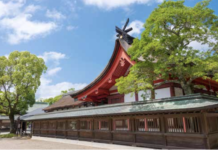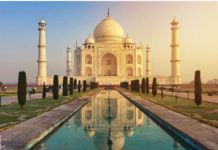
Offset your carbon emissions by planting a mangrove in Myanmar
Text Sophie Ibbotson
Photo Vidar Tancred Paulsrud
In 1947, Norwegian explorer Thor Heyerdahl sailed 8,000 kilometres from Peru to French Polynesia on a balsa wood raft. He, his raft – the Kon-Tiki – and his book of the same name inspired a generation to consider long-distance travel and voyages of discovery. But although Heyerdahl was triumphant that he had demonstrated, with tangible proof, that this was how Polynesia had first been populated, his other discoveries shocked him: He saw firsthand the impact of rising sea levels on island ecosystems, and was one of the first scientists to express concern about global warming. He dedicated the rest of his life to this cause.
It is a fitting legacy, then, that one of the most important projects in the fight against climate change bears his name, and his son, Bjørn Heyerdahl, is its president. The Thor Heyerdahl Climate Park in Pathein, Myanmar is an exceptional success story.
In 2012, the 1,800 acres of mangrove forest surrounding Pathein University had been devastated by a combination of charcoal burning and prawn farming. Huge stretches of the land were barren, and with the deforestation of the mangrove trees, biodiversity and livelihoods were also lost. Working with Pathein University and the Myanmar Ministry of Environmental Conservation and Forestry, Worldview International Foundation (www.wif.care) was asked to restore the site, and by the end of 2015 they had rescued and planted no fewer than 2.5 million trees. The site was completely transformed, and it is now known as the Thor Heyerdahl Climate Park.

Every tree on Earth absorbs carbon dioxide (CO2) from the atmosphere and locks it into the soil, which is why cutting down rainforests speeds up global warming: there is a significantly reduced capacity for soaking up the CO2 produced by burning fossil fuels, so it can’t be locked away.
The fascinating thing about mangrove trees is that they can actually sequester five times as much CO2 as rainforests. In the course of a mangrove’s 25-year-long lifetime, the tree can lock away one tonne of CO2, which is the same amount you’d produce in emissions if you caught a flight from Singapore to Moscow. So if we want to reduce the amount of CO2 in the atmosphere, and thus slow (potentially even reverse) climate change, a useful contribution would be to plant more mangrove trees.
There are other significant benefits to planting mangrove forests, too. Their entwined roots create a physical barrier which can protect fragile coastlines from tsunamis and storm damage, and they make for a fertile breeding ground for fish. A healthy mangrove forest offers numerous employment opportunities for local people, in addition to being beneficial for the environment, and so Myanmar has committed to providing the Worldview International Foundation with a further 14,000 acres of damaged mangrove forests for restoration. New villages are being built along the coastline here, a testament to the confidence local communities have now that their mangrove ecosystem has been restored.
Restored ecosystems offer all manner of possibilities for the development of sustainable tourism, and the Thor Heyerdahl Climate Park is certainly capitalising on this to raise public awareness of the importance of mangrove conservation, and to create a sustainable income stream for local communities. Along the coastline small hotels and resorts are popping up, such as Sunny Paradise on Ngwesaung Beach (www.sunnyparadiseresort.net). It is also possible to stay inside the Climate Park in affordable homestays, and in guest rooms at the field office.
Having a regional attraction like the Thor Heyerdahl Climate Park draws visitors away from established tourism hubs like Yangon, five hours’ drive away, and the larger beach resorts further north along the coast, and thus ensures that the economic benefits of tourism are spread more widely amongst the population. With an extensive, beautiful mangrove forest to explore, travellers not only get to learn about the special mangrove ecosystem, but can also kayak, birdwatch, fish, and hike. The bird-watching opportunities are ever increasing as the number and varieties of birds nesting and fishing amongst the mangroves grows.
To date, much of the funding required to reforest the Climate Park has come from international foundations and corporate sponsors such as Starboard, Sundt Air, and Pegasus Helicopters. But recognising that travellers themselves are increasingly aware of their carbon footprint, and concerned about their impact – especially when they fly – Worldview International Foundation has partnered with Ecofriend, a new initiative geared at educating tourists about their environmental impact, and encouraging them to do something positive about it.
Ecofriend calculates how much CO2 you will emit, using a simple algorithm, and how many mangrove trees would have to be planted to offset that emission. “Tourism can be a huge force for good,” explains Ecofriend’s co-founder Dr Bremley Lyngdoh, “but it has to be sustainable. If the CO2 emissions of every flight are offset voluntarily by the travellers themselves, we will be able to significantly reduce the amount ofCO2 in the atmosphere, and thus slow the rate of global warming.”
Recognising that it isn’t necessarily viable for travellers to visit the Thor Heyerdahl Climate Park in person to plant their tree, travellers can pay Ecofriend USD12 for each tree they’d like to have planted on their behalf. The money is used by the Worldview International Foundation to plant a seedling, and to ensure it is protected throughout its 25-year-long lifespan.

Ecofriends, as supporters are known, are welcome to visit the Climate Park to see their tree. The organisation is also in the process of introducing imaging software so that users can type in the GPS coordinates of their tree, and watch it grow remotely. Dr Lyngdoh hopes that Ecofriend will ultimately be able to plant 500,000 mangrove trees a year – but this is only possible with the support of eco-conscious travellers, airlines, and travel agents.
Climate change is a challenge which affects every person on the planet: No community is immune, although its treatment is not democratic: Some people – especially those in the developing world and those who live on islands and in coastal areas – will suffer far more than others. But as the Climate Park shows, there are small, practical things that we can all do as travellers to slow the rate of global warming.
Planting a tree each time we fly takes little effort, and – to put it in perspective – costs no more than buying a drink at the airport. When the effort of an individual is magnified by the number of passengers on a flight, or by the number of visitors to a destination in one year, the impact accelerates rapidly: The Thor Heyerdahl Climate Park and other projects like it can then expand, restoring thousands more acres of degraded land, and play a significant, positive role in the fight against climate change.
For more stories and photographs from the issue, see Asian Geographic Issue 123, 2017










